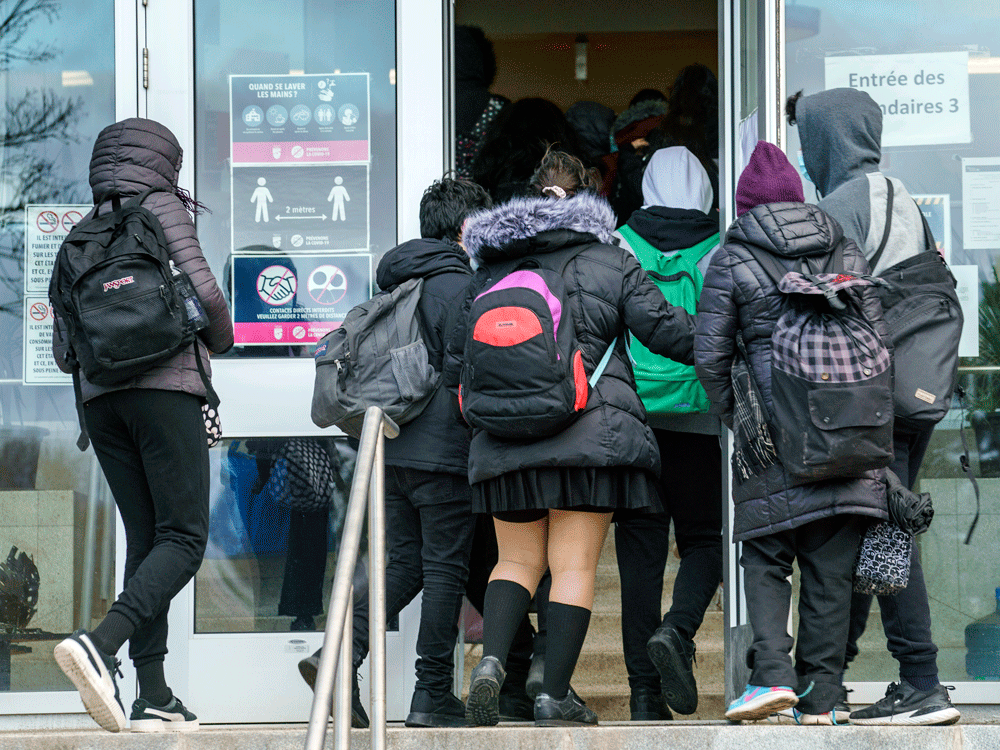he’s been able to stand three or four times, with the help of physiotherapists. he managed to stay on his feet a full 40 seconds before they transferred him to bickle a week ago. “it might take up to three months or so before i’m allowed to leave here,” he said.a lung transplant is an extraordinary hail mary pass for covid. only about 30 have been reported worldwide through the media or scientific reports, though the true number isn’t known. publication bias is likely, said dr. shaf keshavjee, director of the toronto lung transplant program. “more cases have probably been seen but not reported because of poor outcomes,” he and dr. marcelo cypel, the surgeon who led the team that performed sauvé’s transplant,
wrote in a scientific paper.“if someone tried their best to save a patient’s life by doing a lung transplant, and they’re successful, you’re going to hear about it,” keshavjee said. “if we weren’t successful, would we be calling to say, ‘we tried this, and it didn’t work?’ ”theirs was an extraordinary save, and one that could increase in the face of a rapidly mutating virus. with variants pushing icus to the breaking point in ontario, and infecting younger, healthier people, “we may see more referrals” for transplant, cypel said. three other covid patients on artificial lung machines were being assessed for lung transplants last week at toronto general.most of those sars-cov-2 infects recover at home. about 15 per cent will need to be hospitalized. five per cent will be admitted to intensive care, and a very small proportion of those will require ecmo, or extracorporeal membrane oxygenation, a lung bypass machine that drains blood from the body, oxygenates it, removes carbon dioxide and feeds that fresh blood back into the body.“most people’s lungs recover when we put them on ecmo in three, four, six weeks, two months,” keshavjee said. “we’ve seen people who recover after three or four months and get out of hospital and back to their life.“the question is, when do you make that jump and say, ‘these lungs are not going to recover and we have to consider transplant?’ ”most people who get new lungs do so after a long history of lung disease. they’re short of breath, they can’t breathe, they’re slipping away and they beg for a transplant, keshavjee said.when a transplant is performed on a previously perfectly healthy person who gets a viral illness one day, and wakes up with a lung transplant the next, “sometimes they are unhappy,” keshavjee said. “in fact, they’re angry. they’re angry at life; they’re angry at what happened. and they’re not good.”for that reason, “we prefer to have the patient conscious and participating in the decision,” he said.sauvé was completely sedated and on a ventilator when he was transferred to the toronto general from another hospital. he was taken to the operating room, where surgeons made an incision in the femoral artery in his groin, the jugular vein in his neck, and then connected him to ecmo. they were able to wake him the next day. doctors removed the ventilator and then explained to sauvé that, while his body had cleared the virus, covid had mangled the delicate air sacs deep in his lungs. instead of light and airy, they were rigid, thick and stiff. “he had got through the storm of covid, but he was dying, and he needed ecmo, and his lungs still weren’t getting better,” keshavjee said.there were family meetings with his siblings and his partner julie garcia; one-on-one conversations with transplant respirologist dr. stephen juvet. the doctors were clear: a transplant was the only off ramp. while covid had spared his other organs, “we were getting to the point that, if we didn’t have an organ offer within a week, i don’t think he would be a candidate anymore,” cypel said.today, there’s an armpit-to-armpit incision where cypel and his team cut into sauvé chest, spread his ribs to expose the lungs and heart, connected him to a heart-lung machine and then removed and replaced first his right lung, then his left, connecting the airway and blood vessels.at the rehab hospital, they’re working on getting him to stand and walk, strengthening the hip girdle and core muscles. the larger muscles, the hip and shoulders, tend to be the most deconditioned after weeks or months in an icu.sauvé, who works in printing, doesn’t know how he got covid (his partner also later tested positive.) he took every precaution — masks all the time, gloves and masks at work. “i never touched elevator buttons with my fingers. we stayed away from people as much as possible.”he wasn’t allowed any real food or water for a few weeks after the transplant; he was fed through a tube in his nose leading to his stomach. when he woke from the transplant, it felt as if a belt was strapped tight around his chest. “i kept asking the nurses, ‘is there a belt around my chest? could you please loosen it?’ ”“this is something no one should ever get. it’s unbelievable. you may survive it. you may not. i thought i was one of the strongest people i know, and i got it, and it nearly killed me.”lungs are in limited supply, and covid has decreased that number again, partly because of issues of clearing donors for covid. organs can be used from people who recovered from covid, the question is, when can you be sure any lasting effects are gone?“if there is no more covid to be grown, if the lungs pass all of the functional tests of being a good lung, then you can successfully transplant them, and we have. and that saves a life,” keshavjee said. “it’s better than the lung in the person who is dying.”national post
 5 minute read
5 minute read








